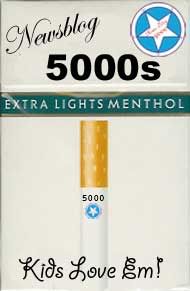The Business of Making Money
Wednesday, December 08, 2004
In 2001, Henrietta Holsman Fore was appointed the Director of the United States Mint. The Mint at that time was a troubled agency. Fore, a believer in businesslike government, quickly set about to implement plans like shortening time to market and reducing overhead costs for better value. Also, under Fore’s stewardship, the mint has been able to identify it’s largest profit maker: coins.
the mint plans to start printing the dollar bill on socks
The mint sells coins to the Federal Reserve at an enormous profit. A quarter costs six cents to make and is sold to the Reserve at full price. Coins are designed to be like a no interest loan where no money is technically made. However, the system returns net earnings to the mint, because very few of the coins are ever returned. The mint is currently trying to push forward with the production of dollar coins to further increase that profit margin. Failing the elimination of the dollar bill, the mint plans to start printing the dollar bill on socks, which are almost as easily lost as coins.
Harry Potter coins are now more recognized as legal tender than the golden Sacagawea Dollar.
The Mint, traditionally one of the few agencies that were able to turn a profit, was facing stiff competition from the makers of alternative currency like the Franklin Mint and the Royal Canadian Mint. As the Dollar continues to sink lower, and the conversion rate approaches 1:1, many people are considering using much flashier Canadian dollars. Another alarming trend is the emergence of Harry Potter Coins from the Isle of Man. Studies show that in the United States, Harry Potter coins are now more recognized as legal tender than the golden Sacagawea Dollar.
These days, there is definitely a happier feel in the air at the U.S. Mint. “It’s like the old days are gone, and we have a real future,” said Marcia Garpano a junior cutter from Pennsylvania. “Gone are the days when budgets were tight and we were afraid we would be shut down and replaced by the Canadians. It’s like we have a license to print money.”






